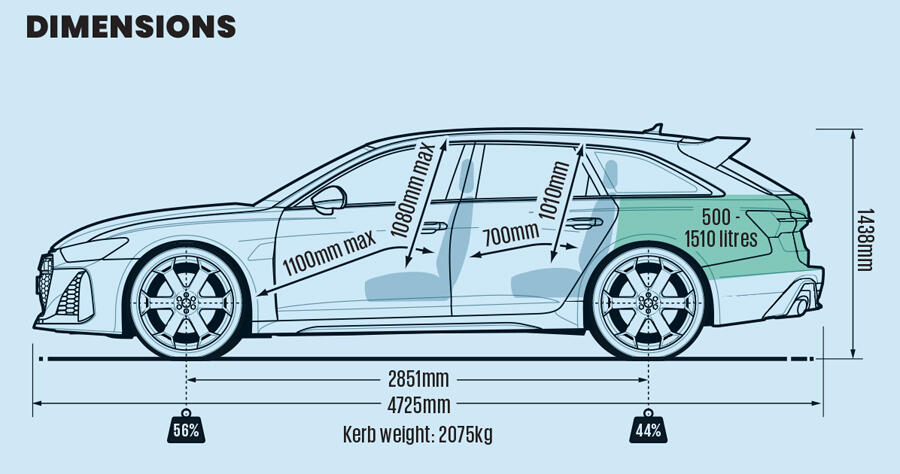More visual tweaks come in the form of a new splitter and a gloss black treatment for the front grilles, making the car look even wider than it is, as well as a carbonfibre bonnet and carbonfibre front wings. They feature cavernous air outlets behind the front wheels, and there’s a different rear spoiler with a central spar, too. All of which explains the need to send the car to Bollinger Hofe for finishing by just seven specially trained employees.
To the oily bits. For duty in the GT, the 4.0-litre TFSI V8 is unchanged and makes 621bhp and 627lb ft. It is manifestly old-school in its application, lacking any form of hybridisation. It drives through an eight-speed torque-converter automatic gearbox, then through Audi’s Quattro permanent fourwheel drive system, with its locking centre differential and Quattro Sport rear limited-slip differential.
Meanwhile, the suspension is radically altered, with the inclusion of RS Sports Suspension Pro. Instead of air chambers and adaptive dampers, the GT is fitted with height-adjustable coilovers that also use dampers adjustable for rates of compression (low and high speed) and rebound (one universal control). Changing the settings isn’t the work of a moment, particularly at the back, and, depending on what you’re altering, can require the car to be lifted and some cladding to be removed. Most owners will, we suspect, leave the GT in its factory settings.
Figures? There are 13 ‘clicks’ for each of the three damper variables, and on the road Audi recommends rebound at 6 (front) and 10 (rear); low-speed compression at 8 and 8; and high-speed compression at 10 and 6. For circuit work, these figures respectively become 4 and 3, 2 and 7, and 4 and 4. The owners’ manual is also at pains to state the damping should never be set to opposing extremes at each end of the car, lest the handling balance becomes dangerous: “The difference between the value on the two axles must not be greater than 9 clicks!”
Elsewhere, the car’s anti-roll bars are 30% stiffer at the front compared with the regular RS6 and 80% at the rear. Note also that the basic spring rate is also increased, although Audi doesn’t say by how much.
As for weight, our test car came in at 2144kg fully fuelled. That’s more than the claimed 2075kg but notably less than the regular RS6 we tested in 2020, which was 2217kg.


